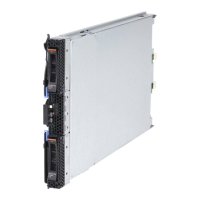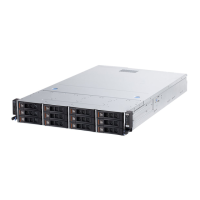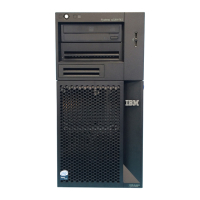94 IBM BladeCenter PS700, PS701, and PS702 Technical Overview and Introduction
The VIOS must be at release level 1.5.1.1or higher has to be installed both on the source and
destination systems. The MSP (mover service partition) attribute should be set to TRUE on
the VIOS. The source and the target VIOS can communicate over the network. The Virtual
Asynchronous Services Interface (VASI) device provides communication between the mover
service partition and the POWER Hypervisor.
The minimum operating system requirement for the Partition Mobility is as follows.
AIX 5.3 TL7 or later
AIX 6.1 or later
Red Hat Enterprise Linux Version 5 (RHEL5) Update 1 or later
SUSE Linux Enterprise Server 10 (SLES 10) Service Pack 1 or later
To migrate partitions between POWER6 and POWER7 processor-based servers. Partition
Mobility can take advantage of the POWER6 Compatibility Modes that provided by POWER7
processor-based servers. On the POWER7 processor-based server, the migrated partition is
then executing in POWER6 or POWER6+ Compatibility Mode.
We might want to move an active logical partition from a POWER6 processor-based server to
a POWER7 processor-based server so that the logical partition can take advantage of the
additional capabilities available with the POWER7 processor.
The following process is an example of how to do active partition mobility from POWER6 to
POWER7 Servers.
1. Set the preferred processor compatibility mode to the default mode. When you activate the
logical partition on the POWER6 processor-based server, it runs in the POWER6 mode.
2. Move the logical partition to the POWER7 processor-based server. Both the current and
preferred modes remain unchanged for the logical partition until you restart the logical
partition.
3. Restart the logical partition on the POWER7 processor-based server. The hypervisor
evaluates the configuration. Because the preferred mode is set to default and the logical
partition now runs on a POWER7 processor-based server, the highest mode available is
the POWER7 mode. The hypervisor determines that the most fully featured mode
supported by the operating environment installed in the logical partition is the POWER7
mode and changes the current mode of the logical partition to the POWER7 mode.
Now the current processor compatibility mode of the logical partition is the POWER7 mode
and the logical partition runs on the POWER7 processor-based server.
For more information about Live Partition Mobility and how to implement it, see IBM PowerVM
Live Partition Mobility, SG24-7460, available from the following Web page:
http://www.redbooks.ibm.com/abstracts/sg247460.html
Note: When you move an active logical partition between servers with different processor
types, (such as POWER 6 and POWER7) both current and preferred compatibility modes
of the logical partition must be supported by the destination server.
Tip: The “Migration combinations of processor compatibility modes for active Partition
Mobility” Web page offers presentations of the supported migrations:
http://publib.boulder.ibm.com/infocenter/powersys/v3r1m5/topic/p7hc3/iphc3pcmco
mbosact.htm

